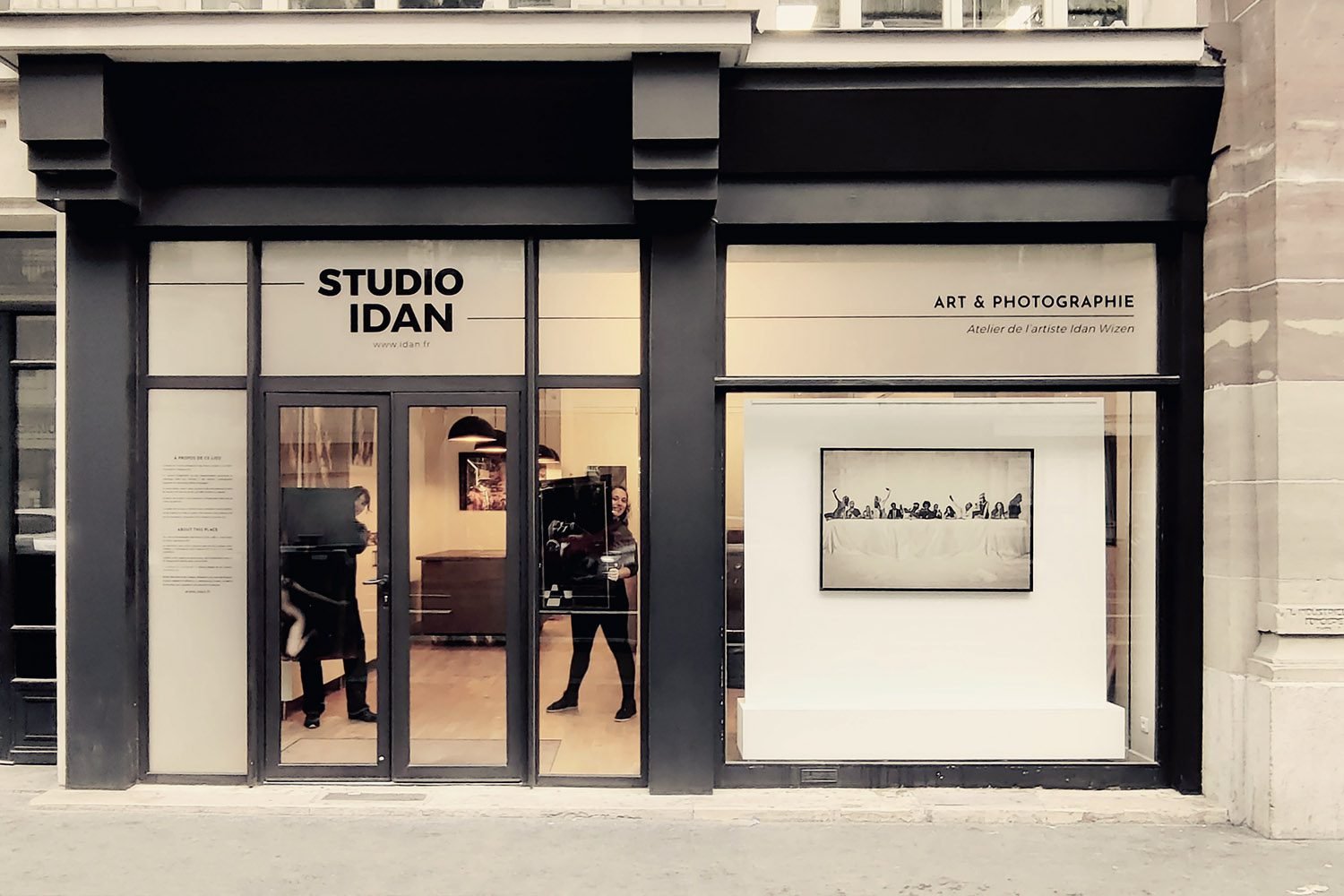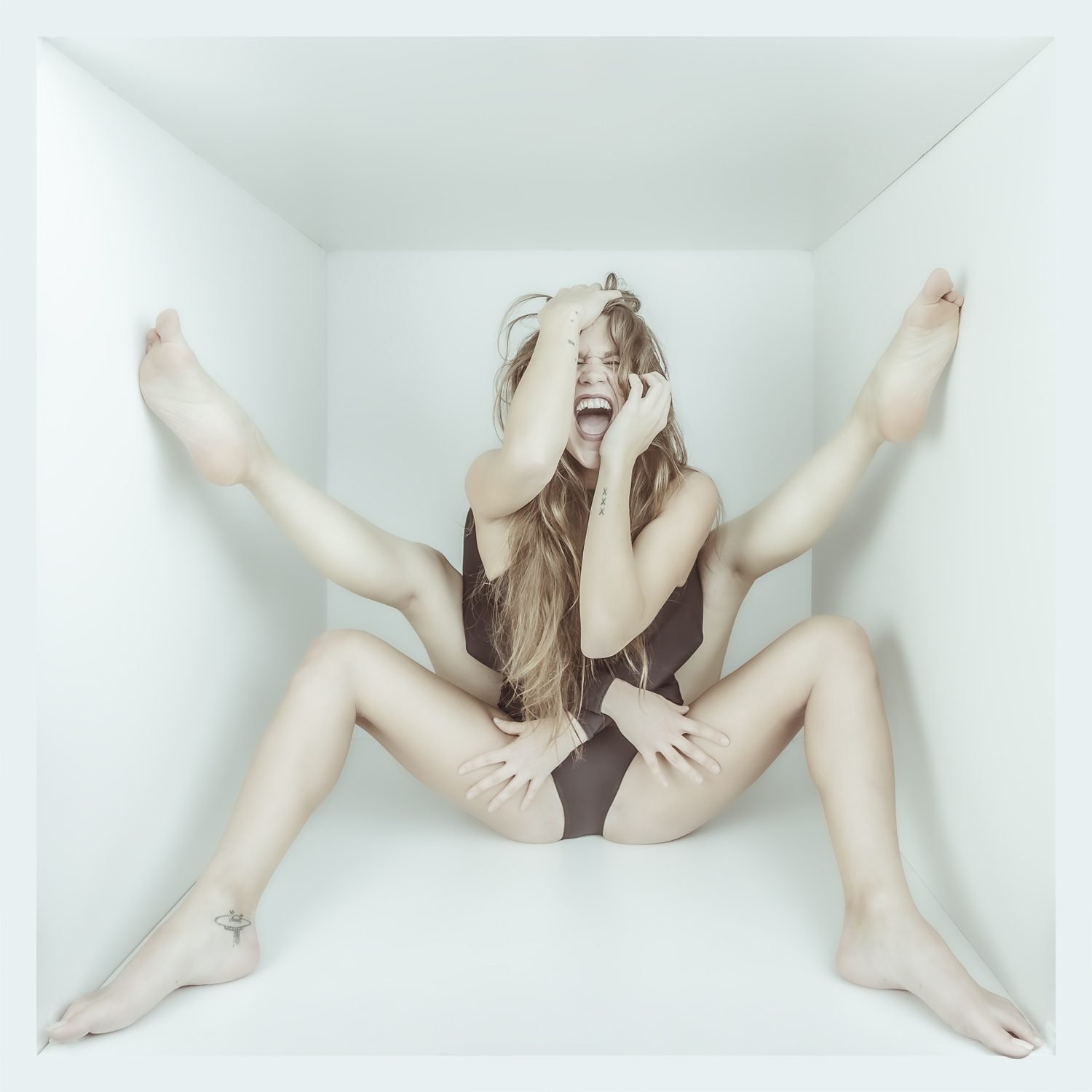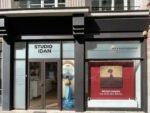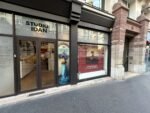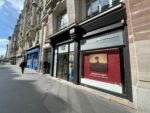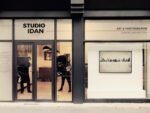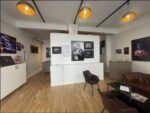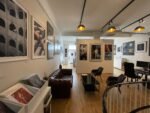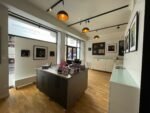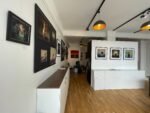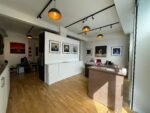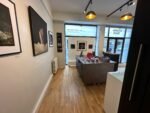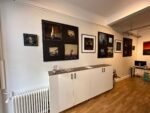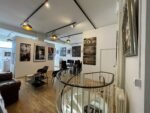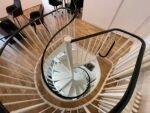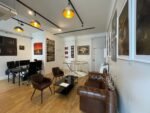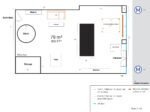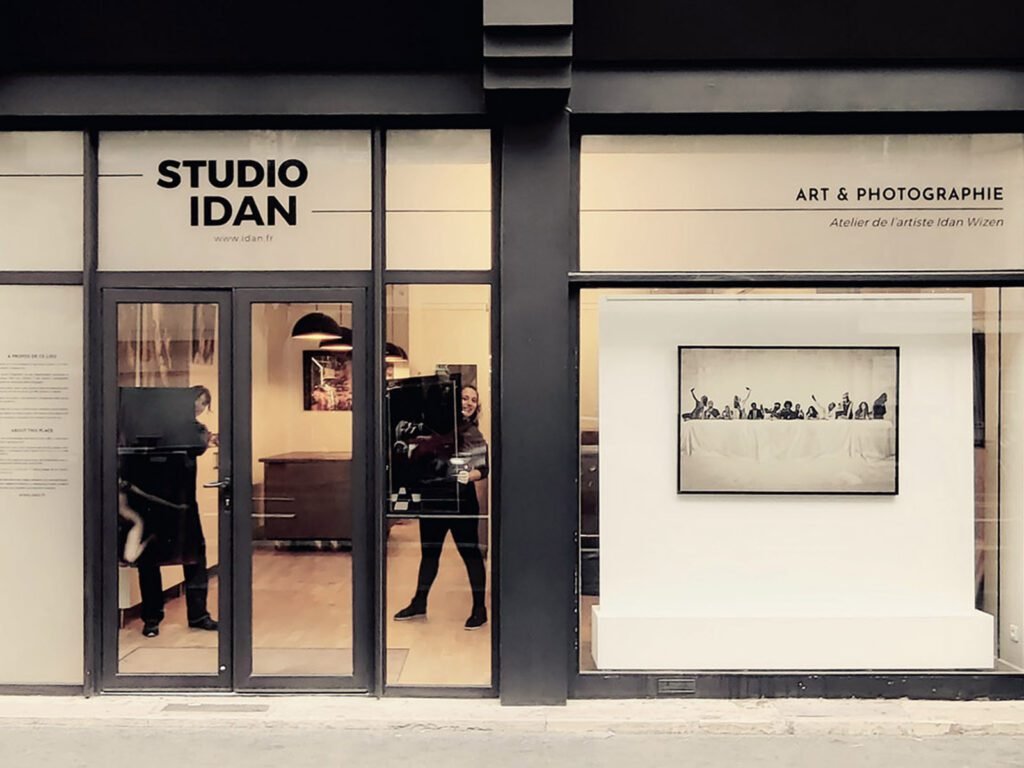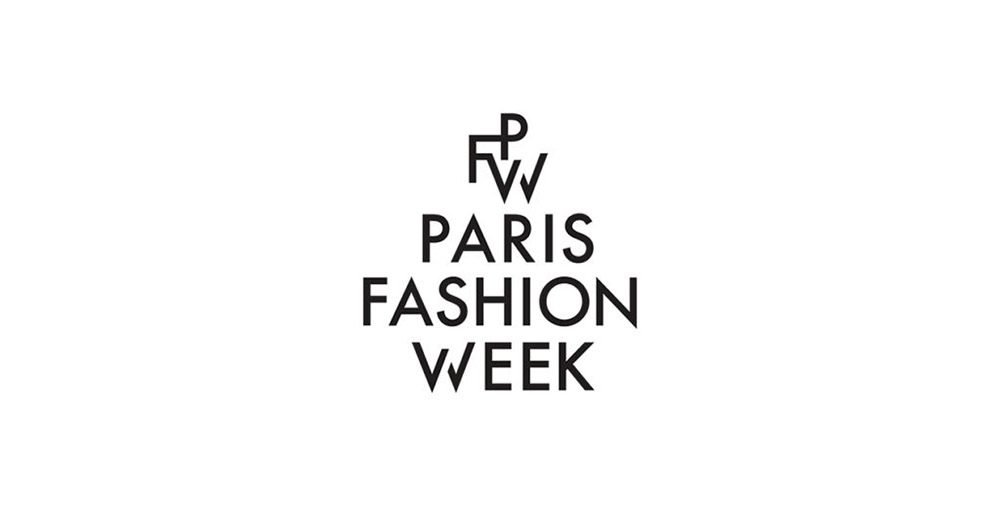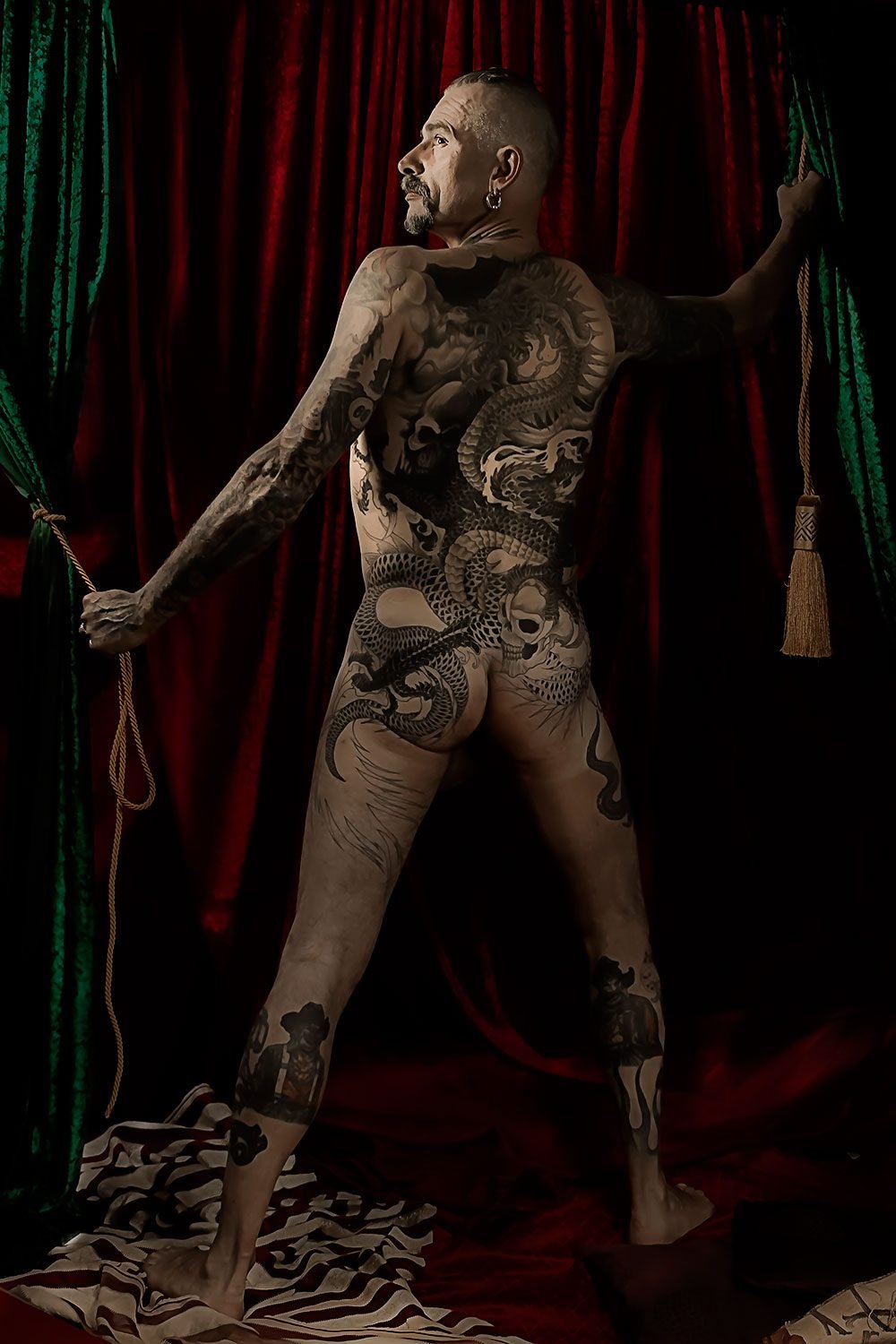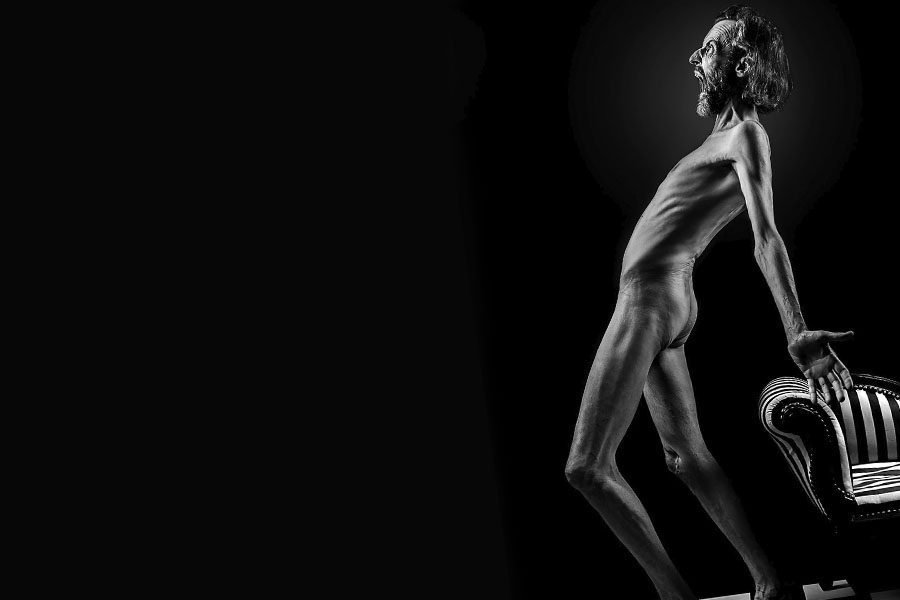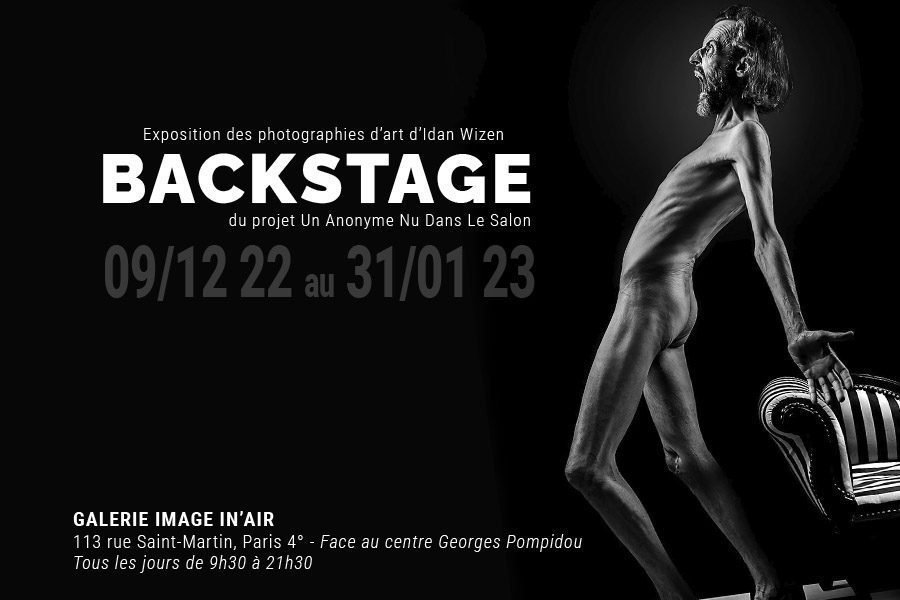Hello, I am Idan Wizen, a fine art photographer in Paris. I have created a collection called Hinders which I will talk about in this video.
What is Hinders? Can you explain the choice of this title?
Hinders is a collection that speaks above all of freedom. Hinders means in English “the fetters“. We chose this title because we wanted to talk about the chains, often invisible, that prevent us from being free, from emancipating and fulfilling ourselves. These are often chains that we will impose on ourselves, without necessarily realizing it. I wanted through twenty frescoes to highlight them, to underline them and to show how each one could try to free himself from them with, already as the first step, the awareness of these chains.
In a world where we always blame society, you decide to put the blame on ourselves. Why?
We are in a society where it is very easy to be a victim. We’ll say that it’s because of society, because of the context, because of a lot of things we can’t do, that we’re not free, that we’re limited. I don’t really believe in that, I think that we are in a relatively free society, we have rarely been so free: we are free to travel, we are free to do what we want, we are free to be whoever we want to be, with a few limits. And fortunately, this is normal. Most of the obstacles, in general, come from ourselves: from the fear of the others’ look, of what people will say, of what we think we are not able to do. Often, we are our own jailer. We are the ones who limit ourselves, we often find pretexts, say that it is because of others, but when we look deeply, we know that we can do it, that we have the possibility to do it.
What I wanted with this collection is to speak to the viewer and tell him that he is capable of going beyond his fears, his limits, his chains and that he is capable of breaking them.
What is the main subject of these photographs? Freedom?
All these photographs speak about freedom, individual freedom, but there is not only one freedom, there are several. Freedom in the broadest sense is a very beautiful concept, but when we put it into practice in our society, we have a lot of freedoms, which are often opposed to each other.
I wanted to underline the different freedoms: freedom in relation to work, freedom in terms of one’s image and self-esteem, freedom regarding the consumer society, freedom concerning the IT field, science, freedom regarding religion. We will talk about all these different freedoms, about how we will react.
Often, nobody will put chains on all these freedoms, we will put them on certain fields, and each one according to its past, its lived, its education, will have hindrances, chains which are different and which are clean to him.
Where were the photographs taken?
There are several photographs, there are several scenes and some were made in my studio in Paris. For the others, we tried to work outside to mix natural and artificial light and to create a different universe – the one you will see on the great majority of the photos of the collection, where we are in the middle of the fields. For this, we found a place near Fontainebleau, in the suburbs of Paris, which we liked because of the great luminosity, the structure and the nature of the landscape and the fields, which were perfectly suited to the dreamlike world we wanted to create.
Why this setting?
Why work in the fields outside? It allowed me to give an impression of infinity, of grandeur. In the studio, we are much more limited in space. I wanted to talk about the pressure of the world that could weigh on each person, in its infinity, in its grandeur, to what extent each individual is very small.
Why in fields? Because we wanted it to be very timeless, very universal. Basically, there are fields everywhere in the world, even if crops often change, everywhere on earth there are fields. And there have been fields at any time, in any case for a very long time, and there will certainly be fields in the future. So that was the advantage of having this setting, to speak of universality, timelessness and to be able to speak in a generic way about humanity, and not necessarily about our current society.
What do the models represent?
The models for me represent everyone and nobody at the same time. They are in my universe, in my imagination, close to the hero or, in any case, to the imperfect hero, the one who is at the beginning of his quest, who is searching for himself, who is developing, who is going to face different dangers.
They are, for me, in the image of the novel or of classical literature, this hero as one could describe him in illustration. They represent everybody and nobody. They are neutral, and at the same time, we can identify with them very easily.
Some elements were made in post-production. Why this choice?
We often associate photography with just a reportage image, something that is taken on the spot and that must transcribe reality. For me, not at all. It’s a way of drawing, a bit like movies today where we create an imaginary world thanks to 3D, thanks to special effects, thanks to incorporation. This is what I wanted to do for this collection. I wanted to talk about what I had in mind, about my imagination, about scenes that were not necessarily directly realizable at the shooting, at least not with the means we had. It was difficult to find quadruplets to create certain photographs, it was difficult to find a giant bolt of 12 m high and even less to transport it. A lot of things were not feasible to shoot, so we decided to make it post-production, to edit when it was necessary when we had no choice. For me, the idea is to bring a sense, an image and to create perhaps a small dose of surrealism and dreamlike.
Can you tell us more about the prints in this collection?
All the prints were made on Hahnemühle Bamboo paper, I won’t go into more detail on that, it’s a very textured paper, very beautiful and deserves to be seen in an exhibition. We have formats that go from 40 x 60 cm to the largest print that is 1m x 1m50, which is a unique piece. In all, there are 15 copies of each photograph in four different sizes.
The drowning of consumption, shoes sauce
This is a photograph that was taken in a studio where we took the model and put her in the middle of a pile of shoes that I had collected around me. A rather direct shot, but it was quite long to arrange the shoes and to put them in place.
It’s a photograph that obviously talks about overconsumption, mainly compulsive consumption in which we can drown. It is for me something dangerous, in which we can lock ourselves, by our society which will push us to appear. But it’s up to everyone to be stronger than that, to get out of it and to consume, of course, but with intelligence and moderation.
Run worker, run
As far as the title is concerned, it was a little bit of a reference to the movie Forrest Gump with Tom Hanks that I think everybody knows (at least I hope so, otherwise I invite you to see it as soon as possible!).
Parenthesis aside, this is a photograph that we took in the fields. Of course, the bolt was not there, it was added in post-production. But apart from that, everything is real: the sky, the movement of the hair, all the intensity, it’s as if we were there.
It clearly makes a reference to the enclosure that one can have in his work, creating the link between the worker and sometimes the hamster that runs in his cage.
How can we get out of this when we are unhappy in our work when we do not fulfill ourselves in it, that we can get out of it, in spite of the necessity to work and the absence, sometimes, of a solution.
It is a whole reflection on this freedom: one is always free to resign, to leave one’s job. Are we really? In reality, it’s always more complex than the beautiful words that tell us that we are free to do what we want.
Just break it!
Just break it! is a photograph that was made, obviously, in post-production, where we see the female character of Hinders four times, where she is fighting with her own image. This image is represented by these big mirrors that are above her as if it were herself in a different dimension.
Why? Because we can see that when you ask people, their own image is much more different than the one that others perceive. It is always difficult to perceive ourselves, to look at ourselves as we are, as much on the physical aspect as on the level of our life in general, and on what we are, on what we have done, on what we have achieved. This difference of perception is fundamental, because as a rule it will guide us towards choices and often towards wrong choices.
The idea of this photo is to tell each individual to be able to detach himself from this image, from this look that we have on ourselves which is distorting, which is biased and to be able to free ourselves from it, by breaking the mirrors that lock us in.
What is your feeling now that you see this project realized?
These are photographs that I am very proud of, that I appreciate very much and that I hope will find an audience that will appreciate them as much as I do.
It wasn’t always very simple, we had a lot of unforeseen problems, whether it was shooting in the studio or on location, even when we realized in post-production that we had certain ideas, we thought that everything would work perfectly, and then we realized that it was much more complicated, that it took more hours than expected. We put six months of delay compared to the initial planning on the post-production.
It’s a project that I’m proud of, that I’m happy with, and that I will be proud to present in future exhibitions.
Will there be a follow-up to this collection?
No, there will be no follow-up. When I create a project I like it to have a beginning, a middle and an end. For me, the story about individual freedom has been told as it is and it suits me well. On the other hand, I have other work in progress on other projects, other photos that are closer to the fresco, perhaps even more elaborate, more complex, which are still in the writing phase, which will soon be in production.
I can already give you a little title: it will be called We Tomorrow.

